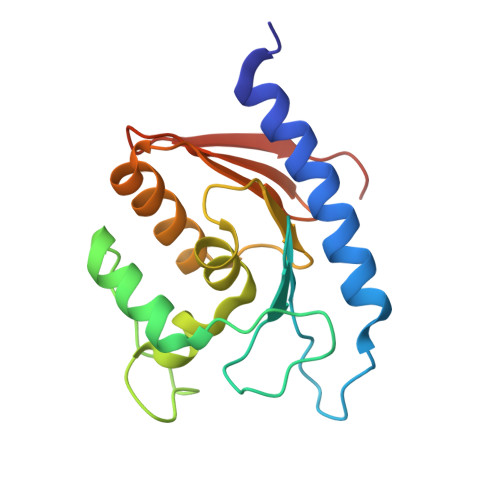Structural basis for sequence context-independent single-stranded DNA cytosine deamination by the bacterial toxin SsdA.
Yin, L., Chen, Y., Shi, K., Barreto Duran, E., Harris, R.S., Aihara, H.(2025) Nat Commun 16: 8841-8841
- PubMed: 41044082
- DOI: https://doi.org/10.1038/s41467-025-63943-9
- Primary Citation of Related Structures:
9C63, 9C64 - PubMed Abstract:
DNA deaminase toxins are involved in interbacterial antagonism and the generation of genetic diversity in surviving bacterial populations. These enzymes have also been adopted as genome engineering tools. The single-stranded (ss)DNA deaminase SsdA is representative of the bacterial deaminase toxin family-2 (BaDTF2), and it deaminates ssDNA cytosines without a strong sequence context dependence, which contrasts with the AID/APOBEC family of sequence-selective ssDNA cytosine deaminases. Here we report the crystal structure of SsdA in complex with a ssDNA substrate. The structure reveals a unique mode of substrate binding, in which a cluster of aromatic residues engages ssDNA in a V-shaped conformation sharply bent across the target cytosine. The bases 5' or 3' to the target cytosine are stacked linearly and make mostly sequence non-specific protein contacts, thus explaining the broad substrate selectivity of SsdA. Unexpectedly, SsdA contains a β-amino acid isoaspartate, which is important for enzymatic activity and contributes to the stability of SsdA as a toxin. Structure-function studies helped to design SsdA mutants active in human cells, which could lead to future applications in genome engineering.
- Department of Biochemistry, Molecular Biology and Biophysics, University of Minnesota, Minneapolis, MN, USA.
Organizational Affiliation:




















